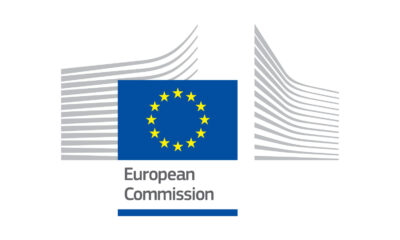Travel
Symbol of a connected Europe: Eurostar’s drive for reinvention amid Brexit, competition and strikes
One passenger vowed to never travel with Eurostar again after last-minute strikes ruined his Christmas plans.
This year marks the 30th anniversary of Eurostar carrying passengers from London to Paris.
The first fare-paying passengers used the service to travel through the Channel Tunnel in November 1994.
As UK newspaper the Guardian reported at the time, “there was a cheer as the £24 million [€28 million] locomotive glided out of Waterloo, cheers as it dived into the tunnel at Folkestone and more cheers as it arrived a record 18 minutes later at Calais.”
Despite long delays during Channel Tunnel construction and a series of glitches during trial runs, Eurostar was hailed as history-making.
For years, it has been a cornerstone of European travel and Britain’s most convenient and comfortable gateway to the continent.
But recently, the company has been battling a series of challenges as Brexit, Covid, strikes and competitors threaten to derail operations.
So what is the future of Eurostar and has the visionary rail company reached the end of the track?
Eurostar struggles to adapt to post-Brexit red tape
Brexit has been an agent of doom for Eurostar in myriad ways.
Following the UK’s exit from the EU, there is now a requirement to stamp British passports at borders. At London’s St Pancras Station, where the Eurostar departs, this has become a time-consuming operation.
Initially, these rules exacerbated by a lack of staff meant that passengers could not be boarded in time.
As such, although the first train of the day between London and Paris has the capacity to carry 900 passengers, Eurostar had to cap ticket sales at 550, meaning 350 seats were going unsold.
To combat this, Eurostar rolled out a ‘SmartCheck’ system last summer which uses facial biometric data to replace the manual UK exit checks – although for now it is just available to Eurostar’s Business Premier and Carte Blanche passengers.
Before travelling, passengers who opt into the service must scan their passport and face alongside their tickets on the SmartCheck iProov.me app – the biometric solution provider behind the system.
On reaching the station, they will then be able to use the dedicated SmartCheck corridor with its walk-past facial biometric checkpoint.
This has allowed them to stop capping passenger numbers, helped by increased police resources. Fifty extra French border control agents have been deployed in Paris Gare du Nord and London St Pancras stations, according to Eurostar.
Brexit checks for Eurostar to affect Amsterdam-London route
A knock-on effect of border checks is also being felt on the popular Amsterdam route, which is set to be affected for six months this year.
The Dutch capital’s Centraal station is undergoing major refurbishment meaning there will be insufficient space for border security equipment and waiting areas for passengers headed to London.
As a result, Eurostar will reduce Amsterdam-London services from four down to three a day from June until early 2025.
Passengers returning to London will have to change at Brussels where security and passport checks will take place. This change will add 48 minutes to an hour and 48 minutes to the journey as UK-bound services cross the border.
On the other hand, some services that were previously suspended have been reinstated, such as the Eurostar Snow service from London to the Alps which welcomed over 4,000 passengers this winter.
Post-Brexit biometric border checks could force Eurostar to limit services
The latest post-Brexit hiccup for Eurostar is the EU’s new Entry-Exit System (EES) which is due to come into force in October.
This will see biometric checks for non-EU citizens before entering the international zone at London St Pancras station.
It will likely lead to yet more long queues, HS1, the owner of the station and operator of the high-speed line between London and the Channel tunnel, has warned.
This could result in a further reduction in services and passenger numbers, the company added.
Too few kiosks have been proposed by the French government meaning Eurostar will likely struggle to process the current volume of passengers.
“We have been working proactively on projections to accurately assess our needs across all stations. As a result, we plan to install around 65 pre-check-in kiosks in our terminals at St Pancras in London and Gare du Nord in Paris,” a Eurostar spokesperson told Euronews.
“We are also significantly reinforcing border control capacity with additional manual booths and electronic gates at both stations. Eurostar has invested around €10 million in deploying solutions to meet these new regulations.”
Eurostar faces Channel Tunnel rivals who could cut costs for travellers
Eurostar is also contending with rivalry on its cross-Channel train route.
In late 2023, new rail operator Evolyn announced plans to purchase a fleet of 12 trains to serve the London to Paris line.
The Spanish-owned firm with mysterious investors aims to launch in 2025. It would be the first time that Eurostar has faced cross-Channel competition in its 30-year history.
In addition, the Virgin Group, founded by billionaire Sir Richard Branson, could also challenge Eurostar’s monopoly.
Although the project is still in its early stages, it reportedly aims to serve routes from London to Paris, Brussels and Amsterdam.
From 2028, the newly established rail operator Heuro says it will add another alternative to Eurostar between Amsterdam, Paris and London.
“We just want lower prices and [to get] more people off planes and on trains,” founder of the Dutch company Roemer van den Biggelaar told RailTech.
For Amsterdam to Paris, Heuro is planning 16 services per day, while Amsterdam to London will see 15 a day.
Christmas ‘ruined’ after Eurostar hit by strikes
Eurostar is also struggling with its reputation after a last minute strike in late December 2023 by French Eurotunnel staff ruined Christmas travel plans for thousands of Brits.
The surprise walkout was staged over bonus pay and working conditions and saw some trains rerouted back to Paris and thousands of passengers left stranded.
During the incident, one frustrated passenger tweeted, “Families devastated here at London St. Pancras International. I’m not using Eurostar ever again.”
Amongst all these setbacks, Eurostar still announced that it transported 18.6 million passengers in 2023, up 22 per cent on 2022 and putting numbers back in line with pre-Covid levels.
The company says it remains “absolutely committed to growing high-speed rail in Europe” and hopes to lure passengers with sustainable travel options and a new rewards programme.
Let’s hope there’s light at the end of the tunnel for this 30-year-old institution.
Travel
UK ETA travel permit: British dual nationals flag issues with application system
The UK’s Electronic Travel Authorisation (ETA) system has officially expanded to European travellers.
Starting 2 April 2025, all EU (except Irish nationals), EEA, and Swiss citizens need ETA approval to enter the UK.
The system became mandatory for travellers from the US, Canada and Australia on 8 January 2025, following its rollout last November for nationals of Bahrain, Jordan, Kuwait, Oman, Qatar, Saudi Arabia and the UAE.
To obtain the visa waiver, which costs £10 (€12) from today or £16 (€19) from 9 April, travellers need to complete an online process – but some British citizens with dual nationality are already flagging issues.
How to apply for the UK’s ETA visa waiver
Travellers can either use the official mobile app, which can be downloaded from the UK government website, or apply online here.
To complete the application, you need the passport you’ll be travelling on, an email address and a credit card, debit card, Apple Pay or Google Pay. You will have to answer a set of suitability questions. You don’t need to enter your travel details.
The government advises applying at least three working days before your trip.
You can delete the app when you’ve finished applying. Your ETA will be linked to your passport digitally, and you will not need to show anything else when you enter the UK.
Though it seems pretty simple, the application process has left a handful of British dual nationals confused about whether they need to apply for the visa waiver or not.
ETA application issues for British dual nationals
In theory, British citizens with dual nationality do not need ETA and should be able to travel to the UK on whatever passport they choose.
But confusion has arisen for those who don’t have a British passport because theirs is expired, lost, or they were never issued with one.
If they choose to travel on their EU passport, the process of applying for ETA – and whether it is necessary – remains unclear.
The ETA application form asks travellers to declare any other nationalities, but the drop-down menu does not give the option to select ‘British citizen’.
Should British dual nationals continue with their application without declaring their ‘secondary’ nationality, they would theoretically be forced to give misinformation about their dual nationality.
Euronews Travel posed the question to an ETA advisor from the Home Office on their web chat.
The advisor refused to give guidance about not declaring British nationality on the ETA form. They stated that if you are a dual citizen with British/Irish citizenship, you do not need an ETA.
However, “you prove your permission to travel using your valid British/Irish passport or other passport containing a certificate of entitlement to the right of abode in the UK.”
When asked what to do if the traveller is not in possession of any of these documents, the advisor responded, “You either need to apply for a British passport or a certificate of entitlement”.
Renewing a UK passport from overseas costs £101 (€123), while a certificate of entitlement comes with a £550 (€658) fee. Both application processes take several weeks.
Euronews Travel has reached out to the Home Office for official guidance.
Travel
Iceland’s Blue Lagoon spa and nearby town evacuated due to volcanic eruption
Flames and smoke shot through the air as the volcanic fissure opened near the town of Grindavik.
A volcano began erupting in southwestern Iceland on Tuesday as tourists at the nearby Blue Lagoon and residents of local communities were evacuated.
Flames and smoke shot through the air as a fissure opened near the town of Grindavík, about 50 kilometres southwest of the capital, Reykjavik, where roughly 40 homes have been evacuated, according to national broadcaster RUV.
Residents mostly vacated the community, located on the Reykjanes Peninsula, in 2023 when the volcano came to life after lying dormant for 800 years.
A swarm of small earthquakes began at around 6:30am local time on 1 April, similar to previous eruptions. The eruption just north of the protective barrier near Grindavík then began at 9:45am, according to Iceland’s Met Office (IMO).
Warning sirens started to sound when the orange-red fissure reached the town’s defence walls at around 10am. IMO has said that the fissure is now around 700 metres long, and “it cannot be ruled out that it may continue to open further south.”
Iceland sits above a volcanic hotspot in the North Atlantic and, on average, sees one eruption every four to five years.
Experts have warned that volcanic activity in the Reykjanes peninsula has entered a new era, with the frequency of eruptions having surged. This is the 11th such event to have occurred since 2021, when this new eruption period began.
Iceland’s Blue Lagoon closed until further notice
The Blue Lagoon is one of Iceland’s biggest tourist attractions. Authorities evacuated guests from the geothermal spa, moving them to nearby hotels when it became clear an eruption was imminent.
It will remain closed through 1 April, and the situation will be assessed later on, according to a message posted on the Blue Lagoon’s website. All guests with bookings during this temporary closure will be contacted.
A ‘red alert’ has been issued for the town of Grindavík, and the area around it is closed off. It will remain closed until further notice.
Travellers have been asked to respect the closures and instructions from local authorities and to stay away while conditions are being assessed, according to Safe Travel Iceland.
During previous eruptions, tourists and locals keen to see the majestic event first-hand have been repeatedly warned to stay away from Reykjanes.
Though it is yet to be updated for the most recent eruption, the UK’s FCDO says eruptions and earthquakes are common in Iceland due to the country’s nature geography.
“In the event of an eruption or wider seismic activity follow the latest advice issued by the authorities,” it says. It adds that travellers should regularly check for alerts and advice from the Icelandic Tourism Board, Icelandic Met Office, Safe Travel Iceland and the Almannavarnir Facebook Page.
The effects of the eruption are currently localised and have not caused any problems for the nearby Keflavík airport- Iceland’s main international airport.
Though ash clouds from previous volcanic eruptions in Iceland have had disrupted international air travel, this one is not expected to do so.
Travel
What is the ETA? European travellers need €12 entry permit to visit the UK starting this week
Read our full guide to the UK’s new Electronic Travel Authorisation (ETA): who needs it, how long it’s valid and how to apply.
The UK’s Electronic Travel Authorisation (ETA) system has officially expanded to European travellers.
Starting 2 April 2025, all European visitors will need ETA approval – or, for some non-EU nationals, a visa – to enter the UK.
The system became mandatory for travellers from the US, Canada and Australia on 8 January 2025, following its rollout last November for nationals of Bahrain, Jordan, Kuwait, Oman, Qatar, Saudi Arabia and the UAE.
Read on for details on cost, validity and how to get it.
What is the ETA?
The ETA replaces the single-use Electronic Visa Waiver (EVW) scheme, offering a lower cost option with multi-entry validity.
The UK government notes that it is not a visa and does not permit entry into the UK. Rather, it authorises a person to travel to the UK.
The ETA is now required for all eligible nationalities. You can find the full list of countries here.
How do I apply for an ETA to enter the UK?
Most visitors will be able to apply using a mobile app and can expect a decision emailed within three days.
Everyone travelling needs to apply, including babies and children, but you can apply for other people.
The UK government says its app is the quickest and easiest way to apply for an ETA. You can download the ETA app from the UK government website.
If you cannot download the app, you can also apply online here.
To complete the application, make sure you have on hand the passport you’ll be travelling on, an email address and a credit card, debit card, Apple Pay or Google Pay. You will have to answer a set of suitability questions. You don’t need to enter your travel details.
You can delete the app when you’ve finished applying. Your ETA will be linked to your passport digitally, and you will not need to show anything else when you enter the UK.
When to apply for your ETA
The government says: “You must apply for an ETA before you travel to the UK. You can travel to the UK while waiting for a decision.”
Considering most applicants will get a decision within three days, it can be assumed you should apply at least three ahead of travelling to the UK, though you can do it much further in advance.
How much does the UK ETA cost?
Like the Electronic System for Travel Authorisation (ESTA) in the US, a fee is attached to the application process.
The ETA costs £10 (approximately €12 at the time of writing), rising to £16 (€19) on 9 April 2025.
How long is the ETA valid?
An ETA lasts for two years. You do not need to apply again during this time.
You can travel to the UK as many times as you want during the period of validity, but you cannot stay for longer than six months on one trip. Check the UK government website for more details on what you can and cannot do on an ETA.
Note that you will need to apply for a new ETA if you get a new passport, as your ETA is linked to it.
Will I need a visa to enter the UK?
As mentioned above, the ETA isn’t a visa, but it does grant permission to enter the country.
All visitors who don’t currently require a visa will need to get an ETA before they travel. This includes those who do not currently need to submit any form of application to visit the UK. US, Canadian, Australian and European citizens need an ETA even for short stays or transiting through the UK, for example.
Travellers from countries that don’t have visa-free entry agreements with the UK will still have to apply for the correct visa and an ETA.
If you don’t apply before your trip, the government says you could be fined, though no further details have been given about this.
You still need to apply if you are transiting through the UK – even if you aren’t going through border control.
The ETA allows you to come to the UK for six months for tourism, visits to family and friends, business or short term study.
You can also get an ETA instead of a visa if you are coming to the UK for up to three months on the Creative Worker visa concession or coming to the UK for a permitted paid engagement. Outside of these conditions, you can’t use an ETA to do paid or unpaid work for a UK company or as a self-employed person.
Who does not need an ETA?
British and Irish citizens, people who already have a visa or permission to live, work or study in the UK, those travelling with a British overseas territories citizen passport and people who live in Ireland and are travelling from Ireland, Guernsey, Jersey or the Isle of Man don’t need to apply for an ETA.
Why is the UK introducing the ETA scheme?
The ETA is part of the UK’s plan to digitise its borders at UK airports by the end of 2025.
The scheme is intended to reduce queues at the border, “helping to speed up legitimate journeys to the UK”.
Facial recognition technology could be used to make these “contactless corridors” possible, British newspaper The Times reports. It would require international travellers to submit biographic and biometric details, like photos of their faces through the new Electronic Travel Authorisation (ETA) scheme before they fly.
-

 EU & the World7 days ago
EU & the World7 days agoCould Litia Garr Be the Next Bachelorette? Update After Grant Ellis Breakup
-

 Politics7 days ago
Politics7 days agoGetting EU ready to prevent and respond to crises
-

 Sports7 days ago
Sports7 days agoCivitanova closes series with Milan and joins Perugia in Scudetto semifinals
-
Travel7 days ago
‘Fundamental for tourists’ trust’: Why Italy is cracking down on fake hotel and restaurant reviews
-

 EU & the World6 days ago
EU & the World6 days agoInnam Dustgir’s Approach to Public Relations
-

 Sports7 days ago
Sports7 days agoMiami, Arthur fils overturns Alexander Zverev and gives Jannik Sinner a gift
-

 Sports7 days ago
Sports7 days agoVirtus Bologna blown away by Red Star: Dusko Ivanovic raises alarm
-

 Sports7 days ago
Sports7 days agoPlayoff Scudetto: Itas Trentino wins game 4 with Cisterna and flies to semifinals









